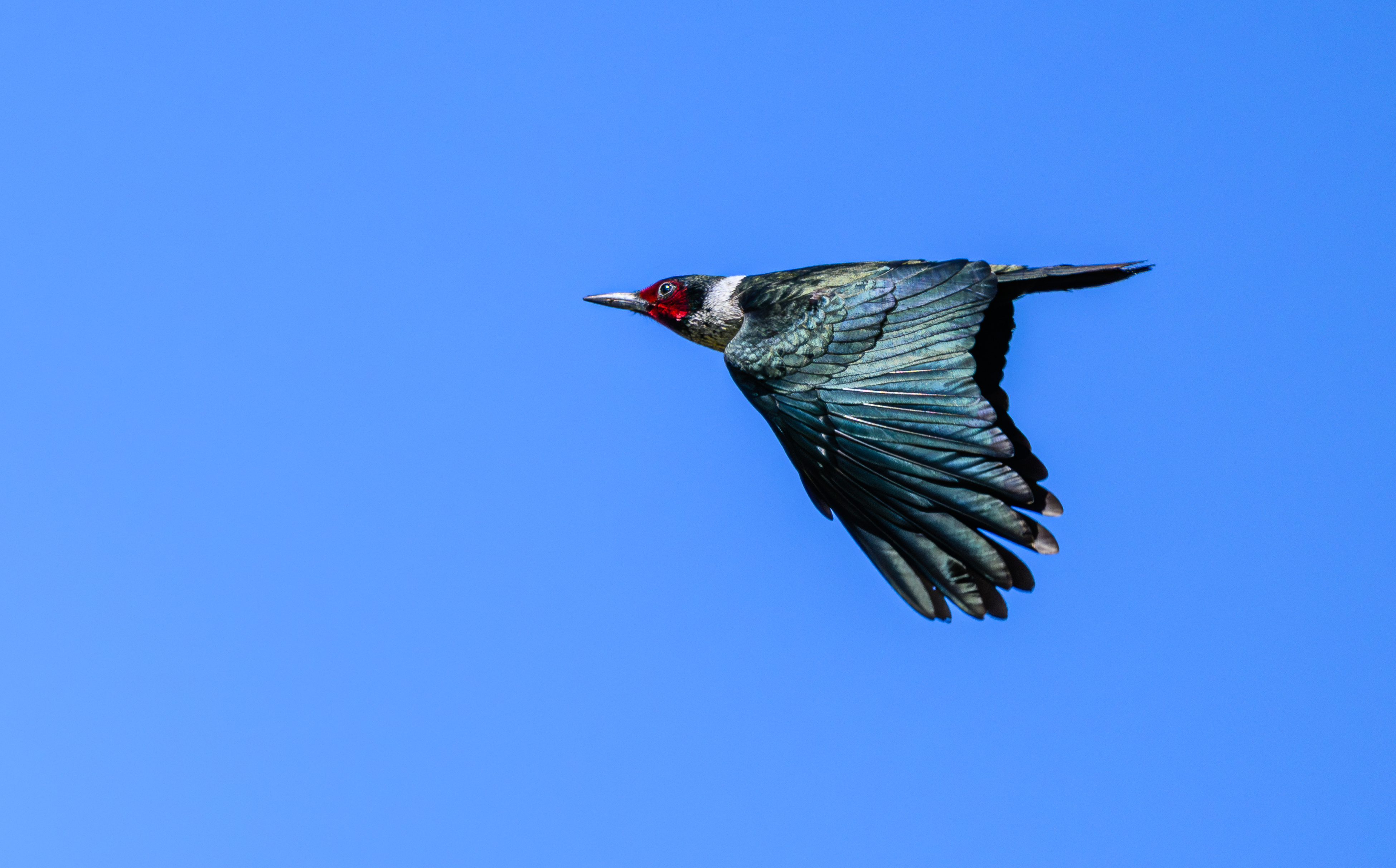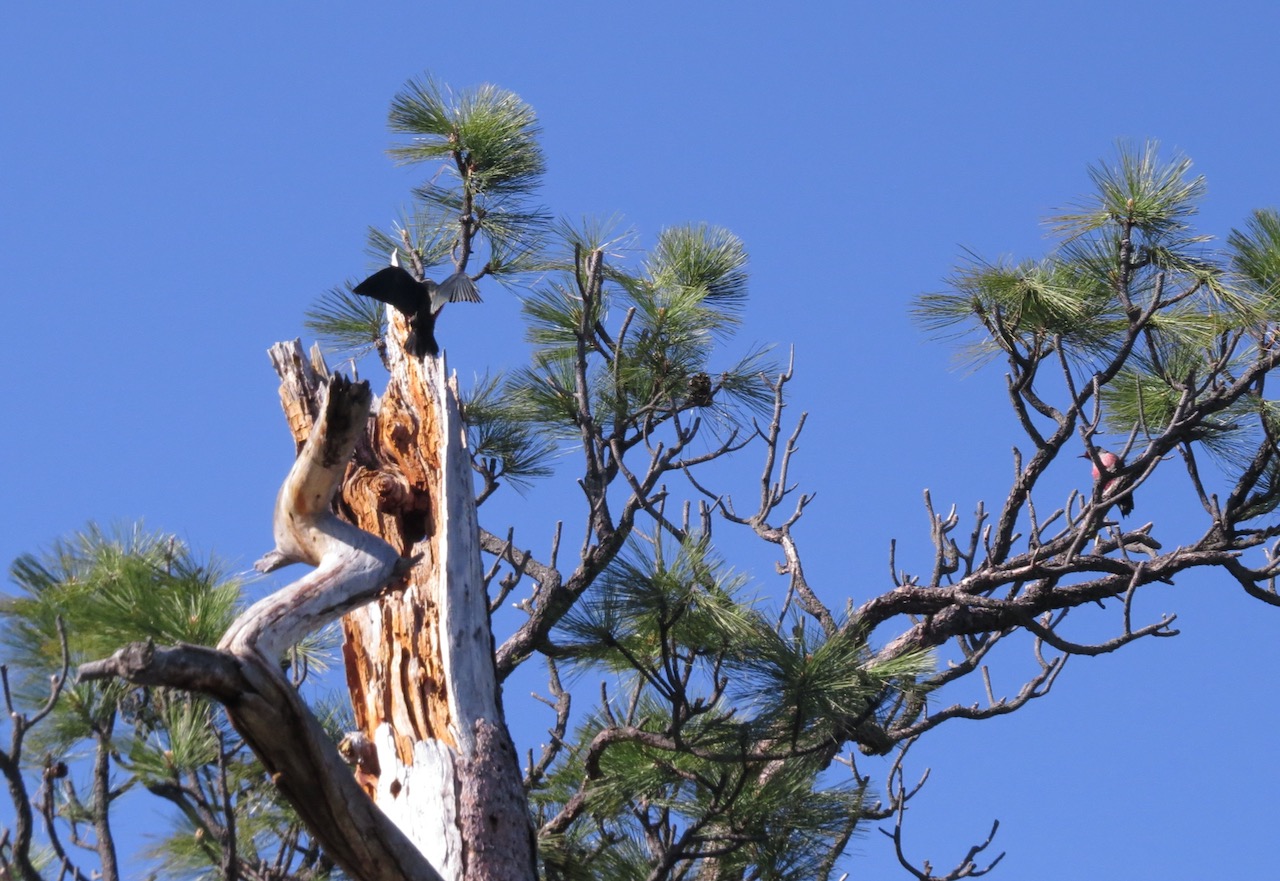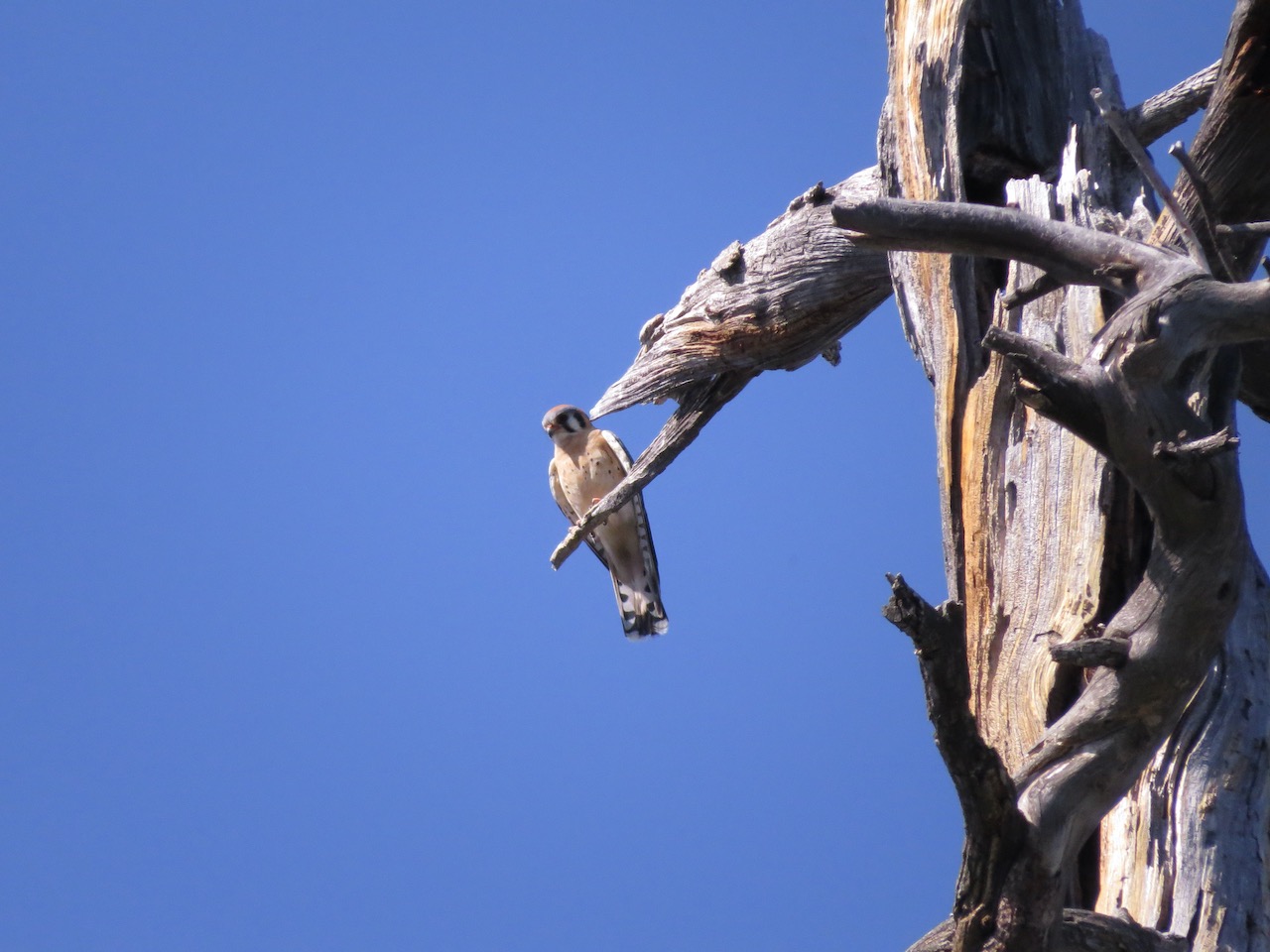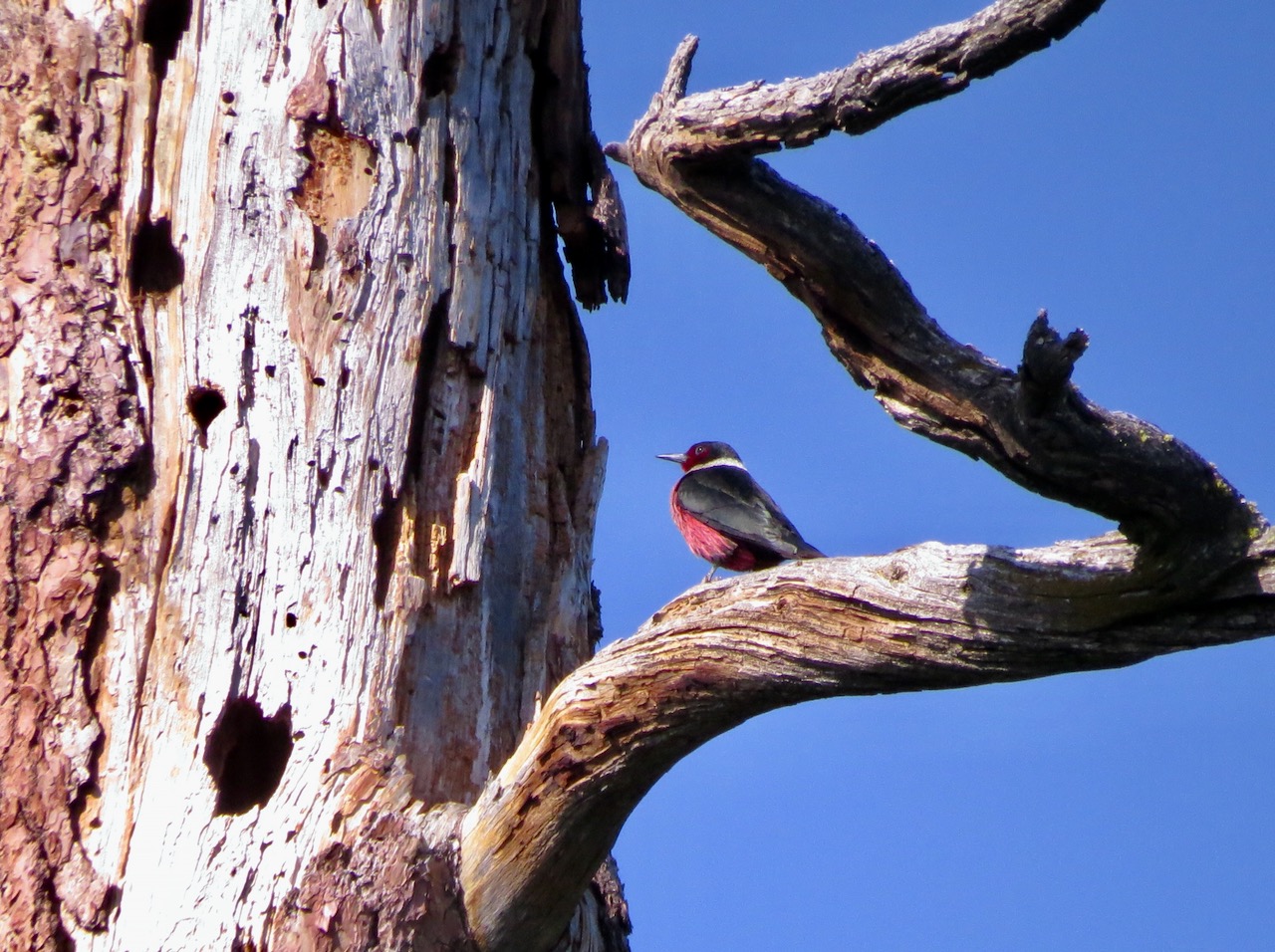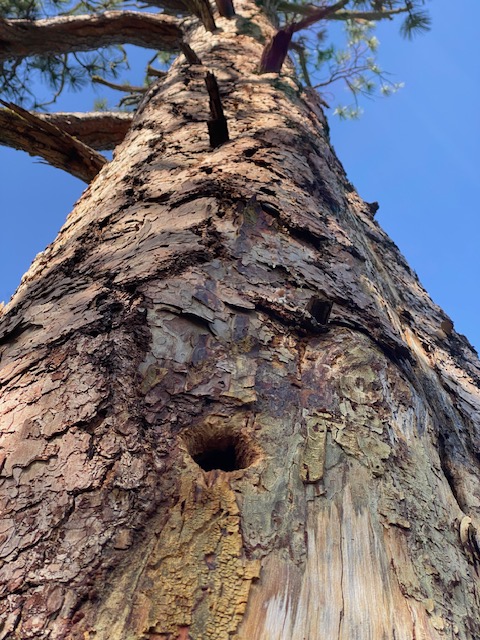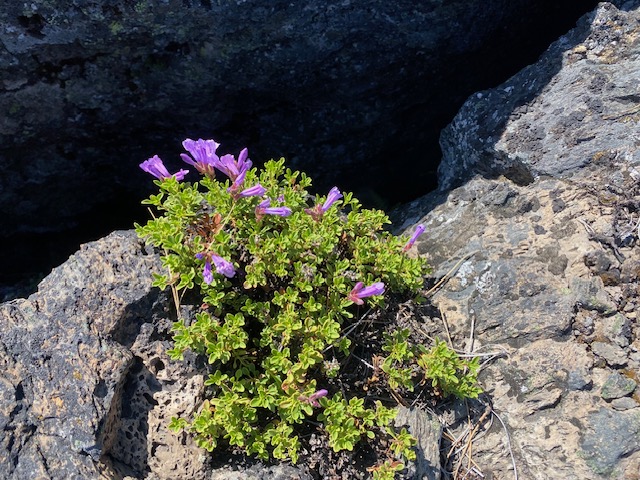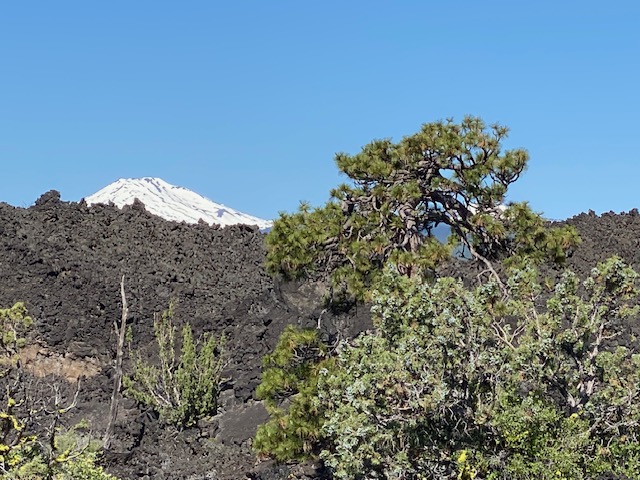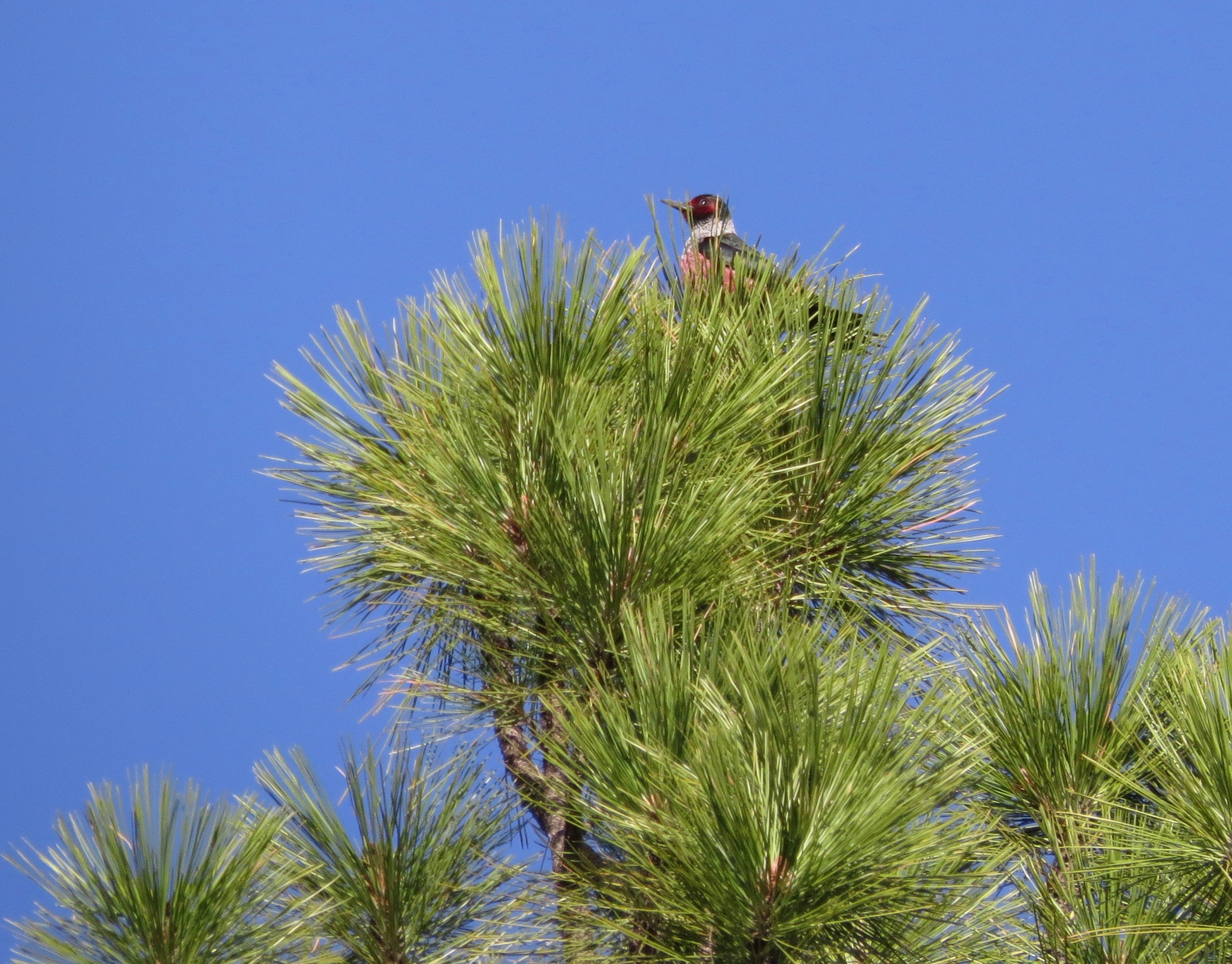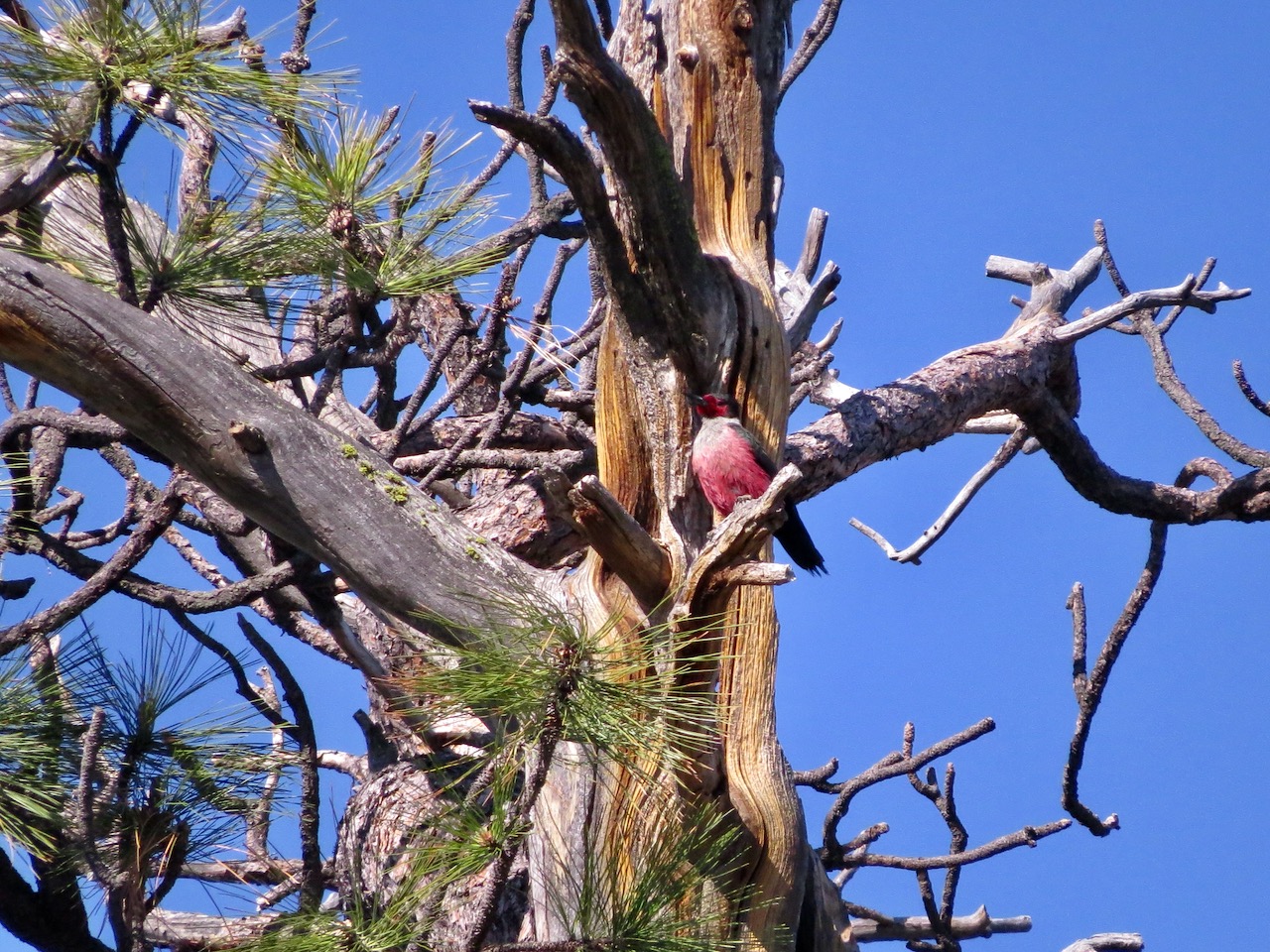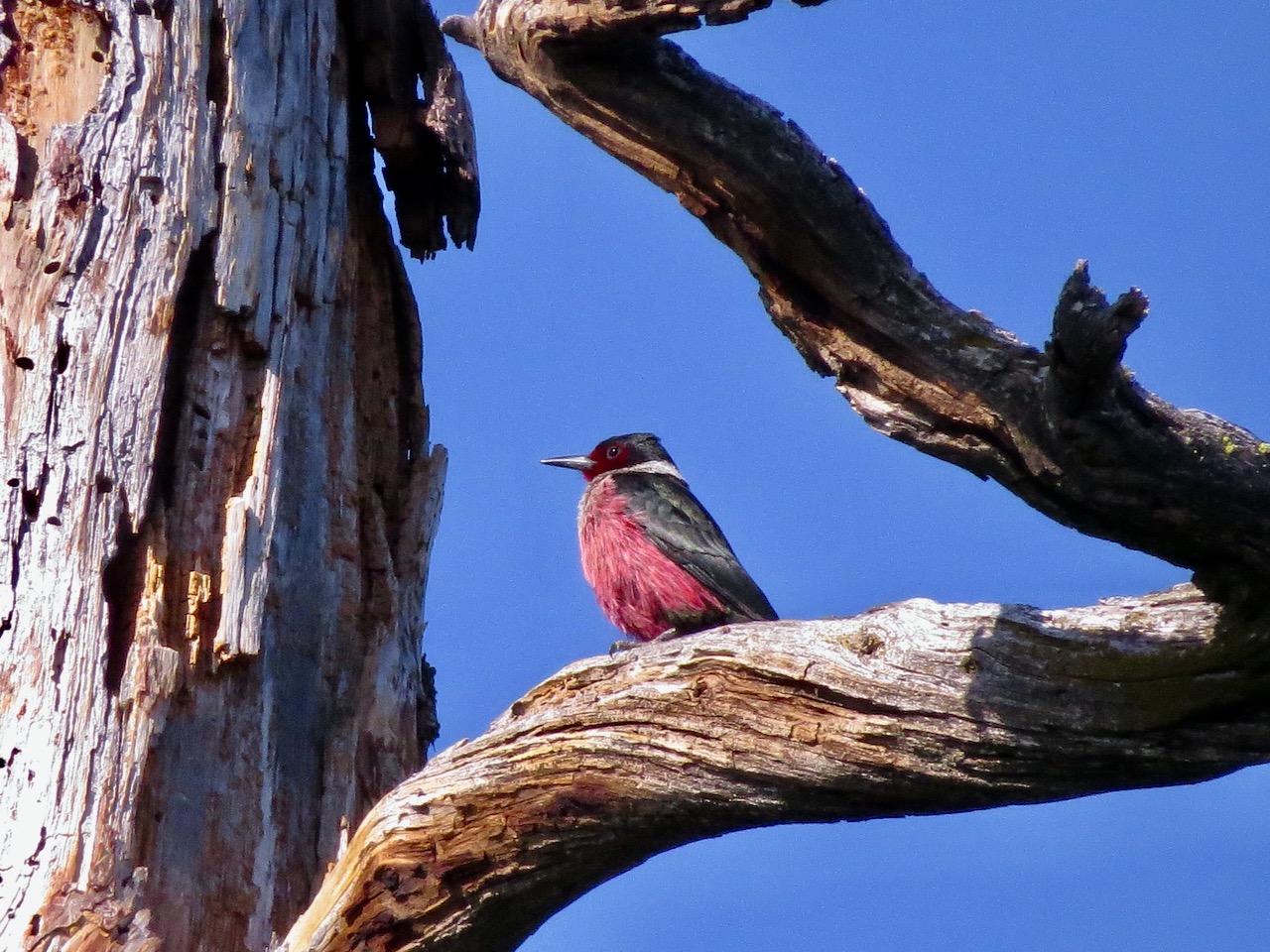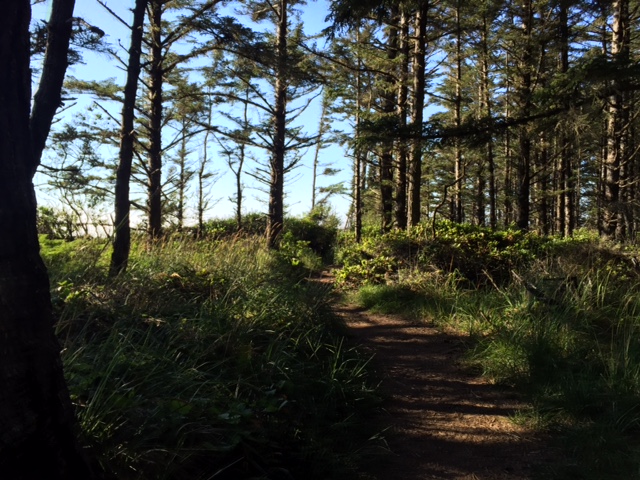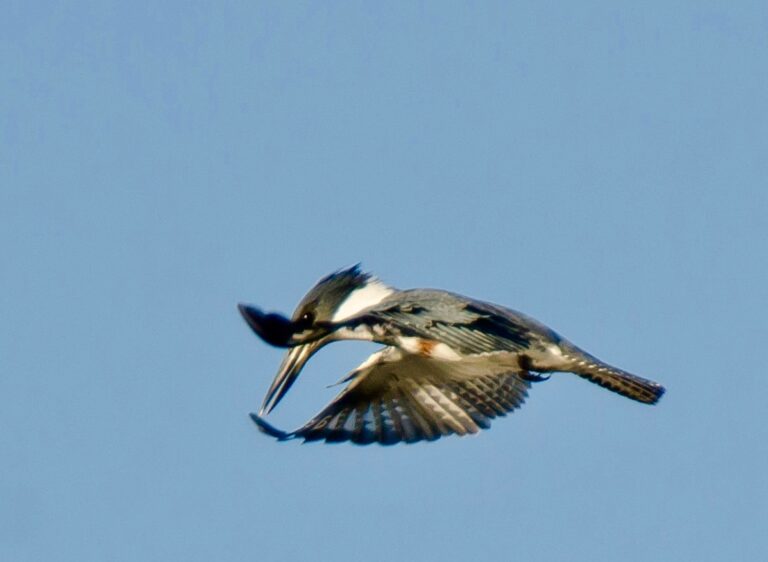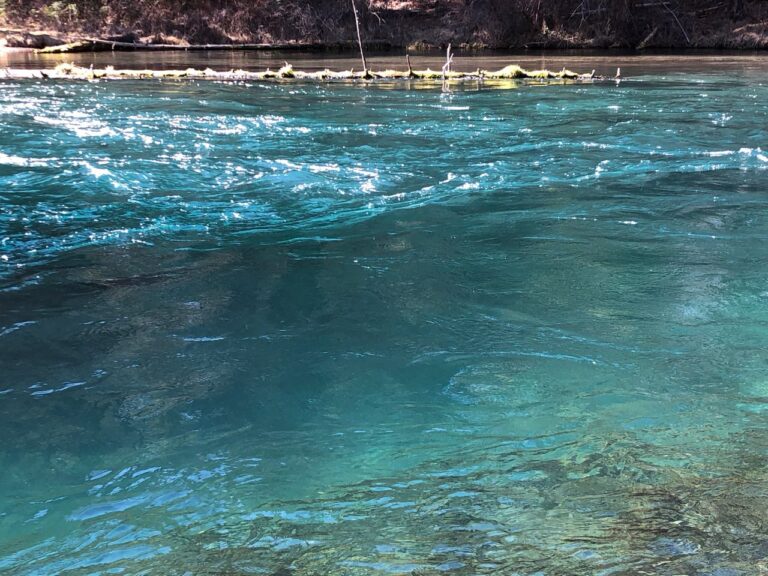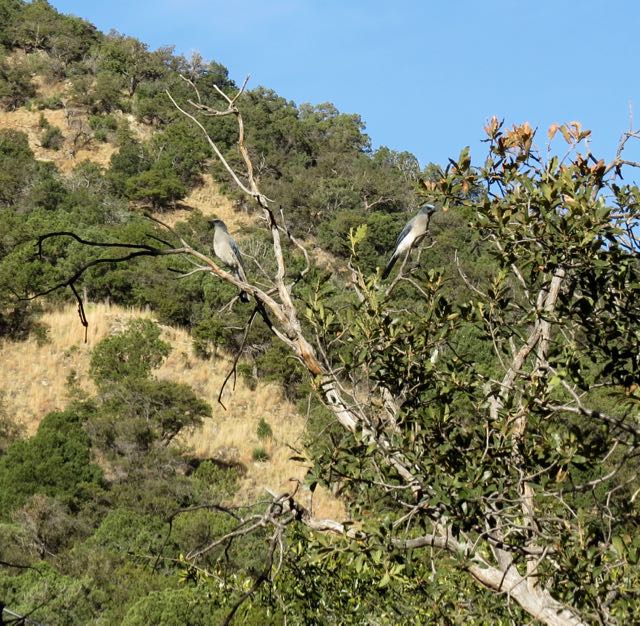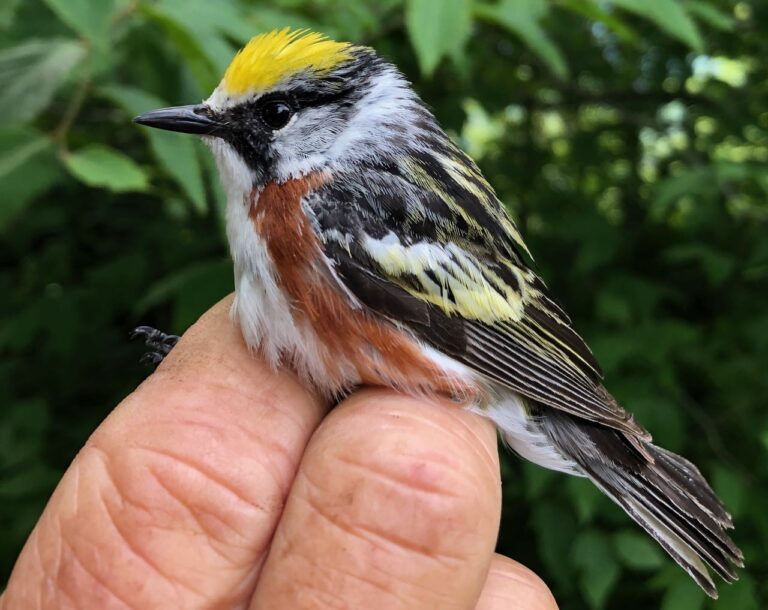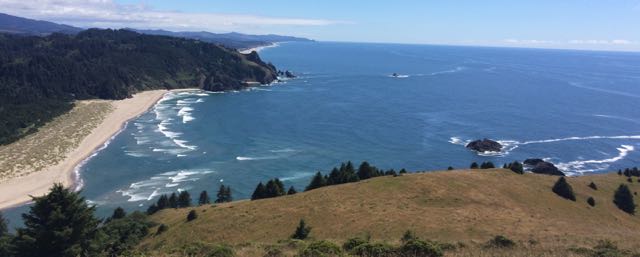Lewis’s Woodpeckers –What Makes a Forest Whole
Lewis’s Woodpeckers are radiant and confounding members of the family Picidae. I’m spellbound by their enigmatic presence and am fortunate to know of two local (and secret) nesting havens.
Come with me first to the Turquoise Forest. I go there often to be among several amber, sun-warmed and vanilla-wafting ponderosas, likely spared from logging because they are tucked up against lava flows. The oldest and grandest is the Grandmother Tree and not far from her are three dead trees that are not so old.
Then, put on a pair of sturdy hiking boots to cross another part of the 7,000-year-old lava flow to reach the Oasis Grove of ancient and powerful ponderosas. It’s slow going over jagged black rocks with lava tubes, caves, and clefts harboring delicate cliff ferns and penstemon wildflowers.
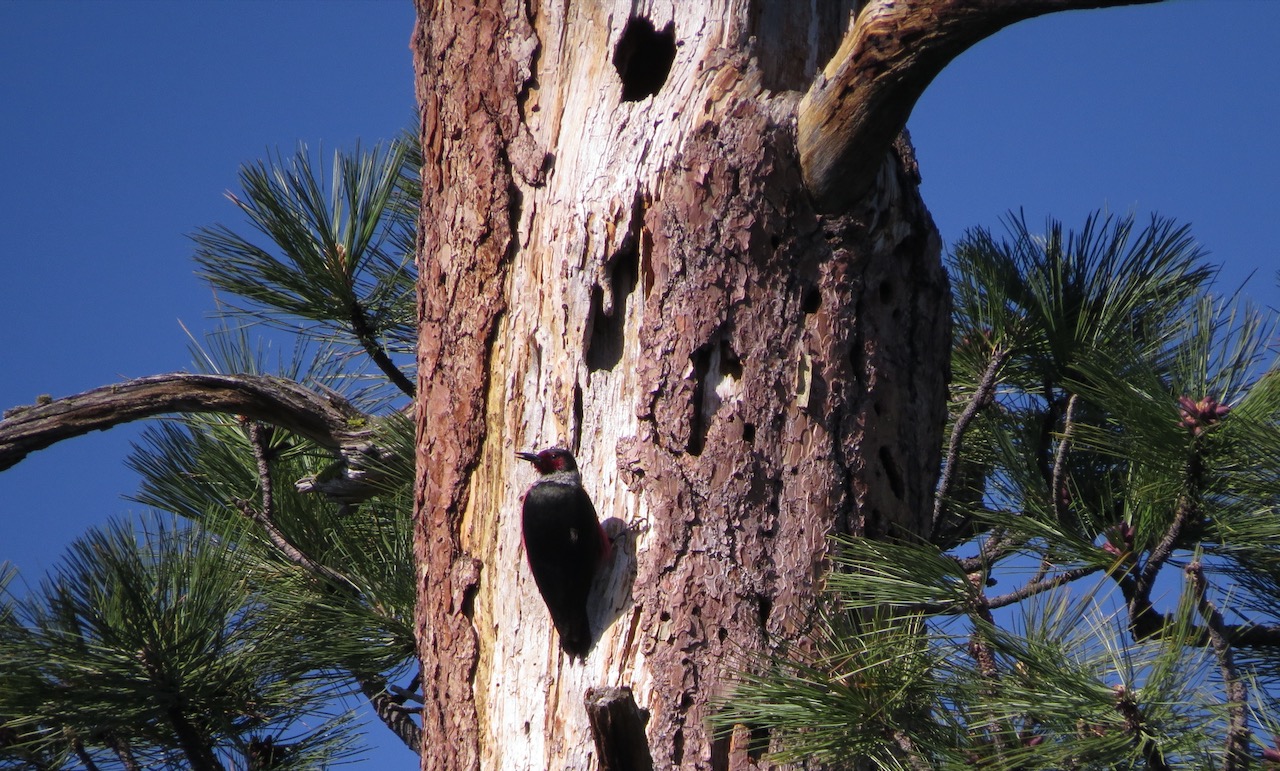
Bird Love in the Turquoise Forest
Unrolling my yoga mat below two tree snags where Lewis’s woodpeckers come to nest each year, I stretch out and wait. Luxuriating under an azure sky at 70 degrees, I feel almost guilty in my indolent observations, which are so unlike hiding in a blind with binoculars focused on skittish belted kingfishers. I do miss the sound of rushing water.
Churr…churr…churrr! Here comes one now. And then another. The two Lewis’s woodpeckers land on a sturdy branch of a 50-foot-tall dead tree that last year served as a convenient dining hall, while the companion harbored the nest hole and offered a culinary feast of insects as well.
And just like that, the male mounts the female for a “cloacal kiss” –pressing his cloaca (a posterior opening) to her cloaca. Yes. That’s bird sex. And it’s over in seconds. He flutters away. She gives a few clipped chittery calls. The male and female are identical in their stunning plumage, but in this moment I know who is who.
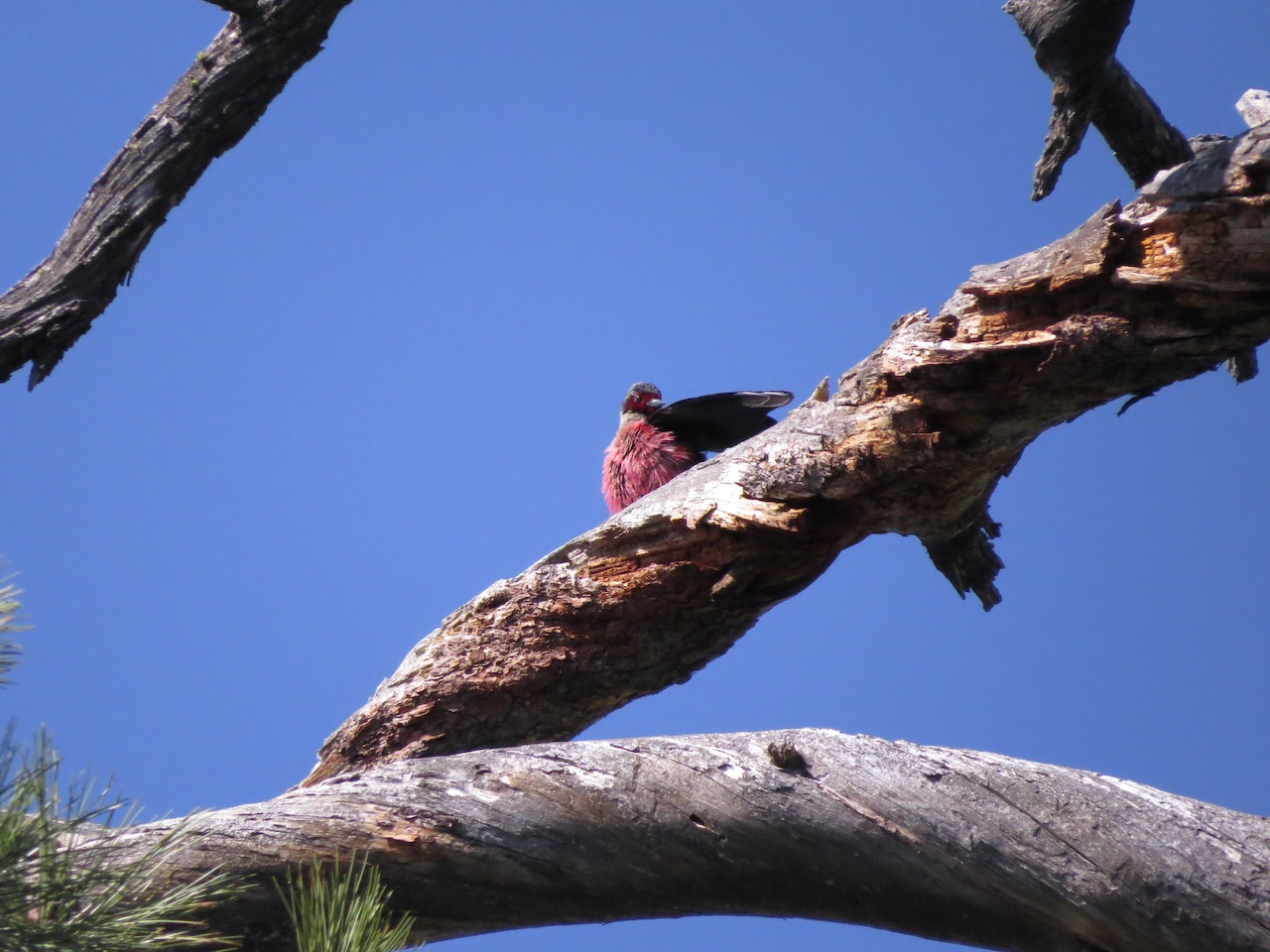
Like a magician swirling a cloak, a Lewis’s woodpecker appears to change colors in a whisk of sunlight– from crow-black wings and back to a sheen of shadowy greens, cobalts, and golds. The face is raspberry red as if slathered in juice. Below an elegant gray collar is a downy chest suffused in rosy sunrise hues.
Maybe a shapeshifter is a better word. In an instant, this woodpecker becomes a flycatcher “hawking” for insects and zipping back to a snag to ascend the trunk with zygodactyl toes. (You have to love “zygodactyl,” defining most woodpecker toes as two facing forward and two backward, the better to grip a vertical trunk).
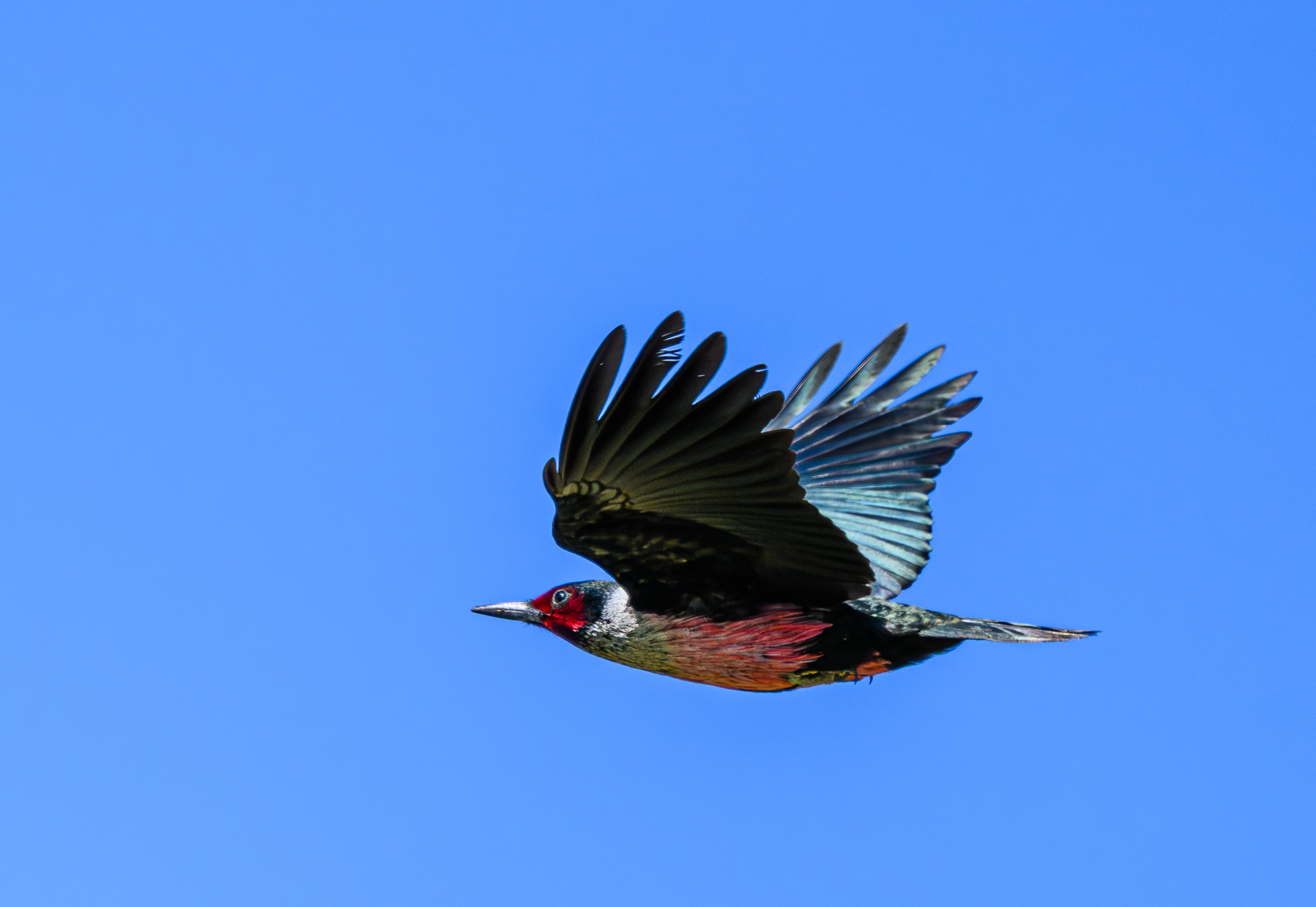
On this afternoon of the easy watch, I’m massaged by breezes sifting through pine needles and curling like ringlets straying across my face. The bitterbrush (Purshia tridentata) has come into bloom–clusters of lemony flowers sighing in spicy cinnamon. Their blooms invite insect pollinators.
Lewis’s woodpeckers will descend to the forest understory to glean for insects among blossoms, leaves, twigs, and trunks. Manzanitas, currants, and ceanothus are denizens, too, of these central Oregon ponderosa forests. Unseen below me is the mycelial network knitting away without dropping a stitch.
The longer I observe, the more I notice. These woodpeckers are wedded not just to a single shelter snag but to clusters. They often flap to green treetops as well. They seek their insect prey at every level, from nabbing the sky flyers to nipping minuscule mites on a leaf.
Follow the bird to know what makes a forest whole.
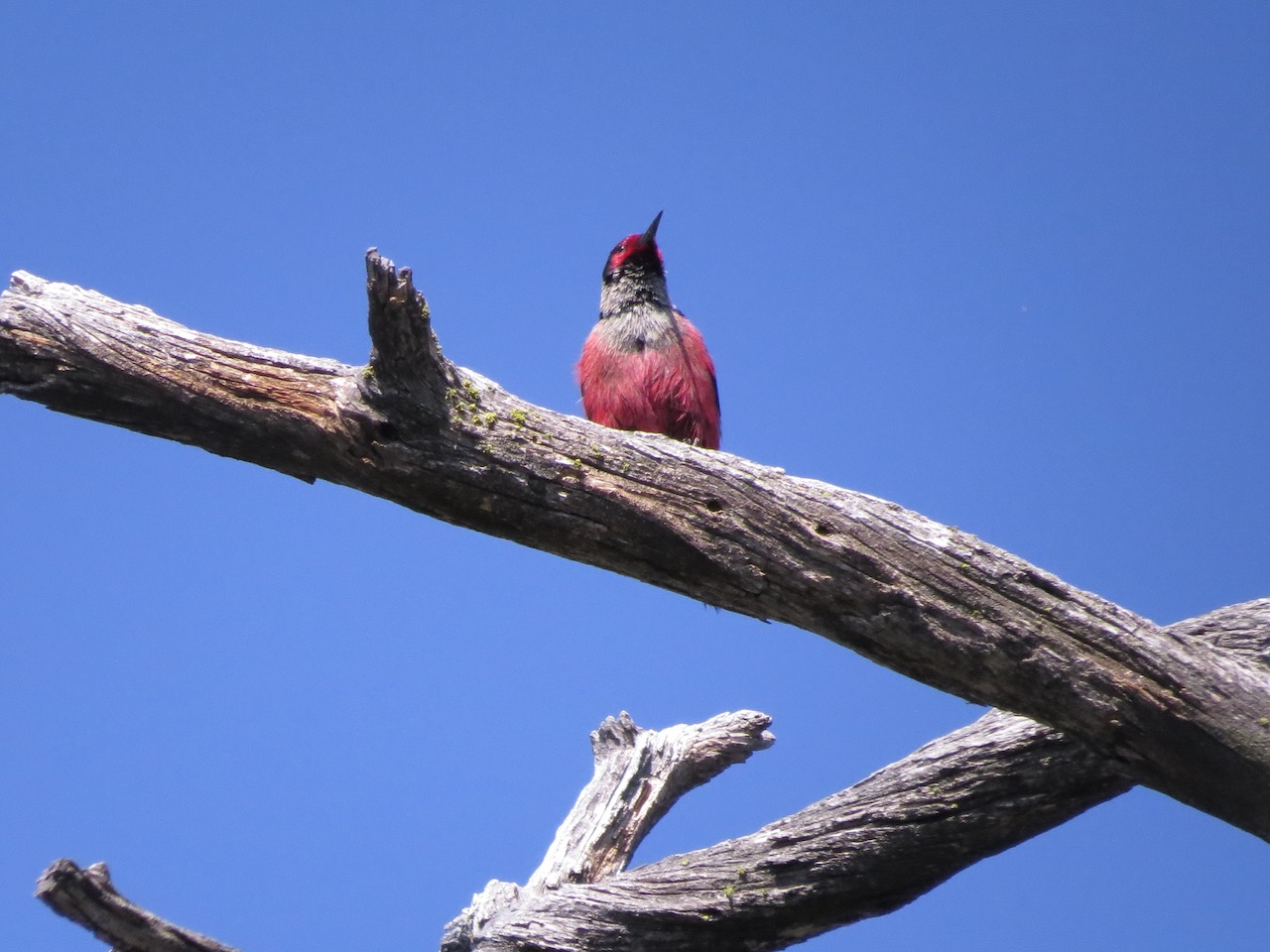
I stay for two hours and wish I’d brought my camera. The courting woodpeckers come and go. Sometimes, they perch in the tops of nearby green pines shimmering in the sparks of light upon needles bunched in threes.
The birds mate three times–always perfunctory, at least by human standards. I ponder the potential nest holes, created initially by other woodpeckers with sturdier bills. Right then, I hear the ululations of a northern flicker calling. Raucous ravens in the distance seem to be sharing a hilarious joke, laughing so hard their throats are sore. Far above, five violet-green swallows arc, twitter, and vanish. Cumulus clouds curtain the sun and mosey on their way…as I do, rolling up the yoga mat as my sweet labrador Pepper uncurls from her nap. Home awaits …for now.
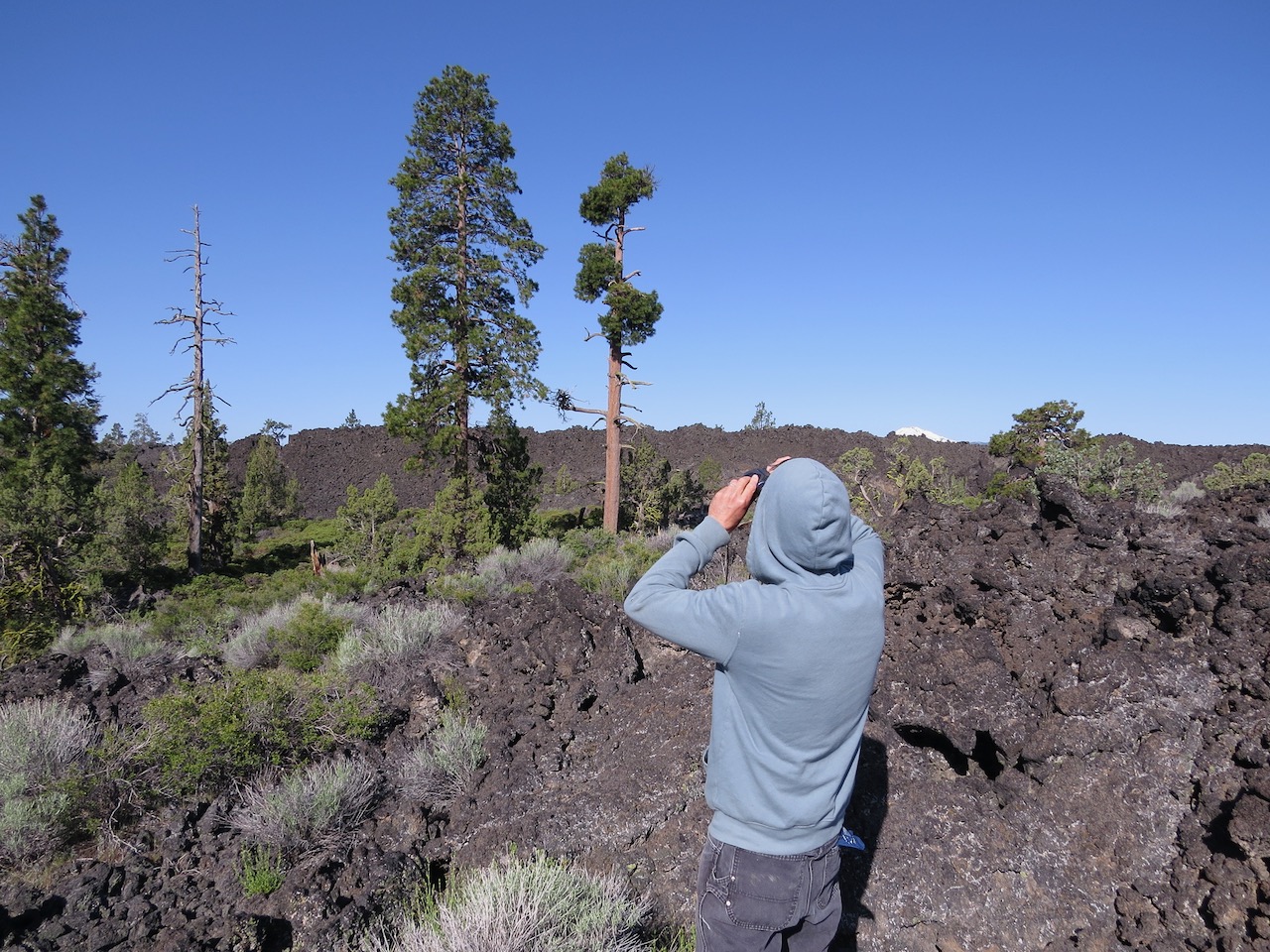
Lost in Time: the Oasis Forest
Definitely wear long pants, a long-sleeved shirt, and boots. I wear gloves to guard my hands when reaching for holds on rough lava rock.
At the edge of the great flow that once was a fiery river spilling from Lava Butte, take time to choose a route. My favorite is to find a microcanyon, a lava tube with a collapsed roof. On this morning, I squeeze past a determined juniper, and linger to run fingers over moss and ferns in what is also a microrefugia. It’s narrow and about 10 feet-deep, and gradually ascends for a clamber to the top of the world.
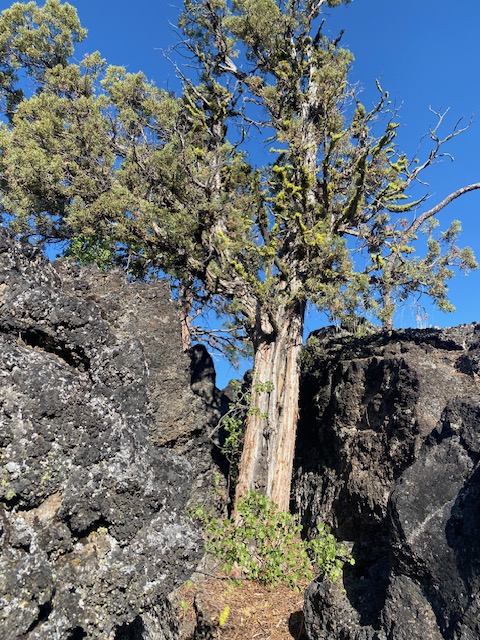
To the west, the snowy Cascade range looms and I hear the Deschutes River less than a mile away. Neon green lichens frizz and fur a gnarled juniper twisting as unseen roots explore deep down for sustenance. A canyon wren sings his tumbling free-fall song and I am swept away in yearning.
The Oasis Forest rises from a circular hollow–an island lost in time and spared when lava parted and flowed around the original grove. It’s a lucky morning.
Right away, Wes and I see and hear a pair of Lewis’s woodpeckers, joined by a frenzied Klee…klee…klee. Two kestrels! Double wonder in the oasis. Both birds nest in the great trees with sheltering hollows. Here, living trees thrive with dead limbs and broken tops. Stately snags mingle among them.
The tall trees grow as they will among junipers and thickets of manzanita all nourished by lava ashy soils. The living and dead merge into one continuum.
Follow Lewis’s woodpeckers to know what makes a forest whole.
#
Learn more about Lewis’s woodpeckers here. You might enjoy an earlier blog on the Turquoise Forest, too.
Please write to the Forest Service and the Bureau of Land Management urging both agencies to protect all that makes a wild forest whole, from big and old trees to dying, dead, and down trees and all the understory plants so vital to our threatened insect pollinators. Leave forests alone after wildfires; plentiful burned standing trees are critical for Lewis’s woodpeckers and a suite of other birds, plus the forest renews so much better and retains stored carbon–helping us fight global warming.
Listen to the birds that guide us to the complexity we must honor. This is our chance to comment before June 20th to keep big trees standing and stop the ongoing logging. (See my last blog ). Thank you.
